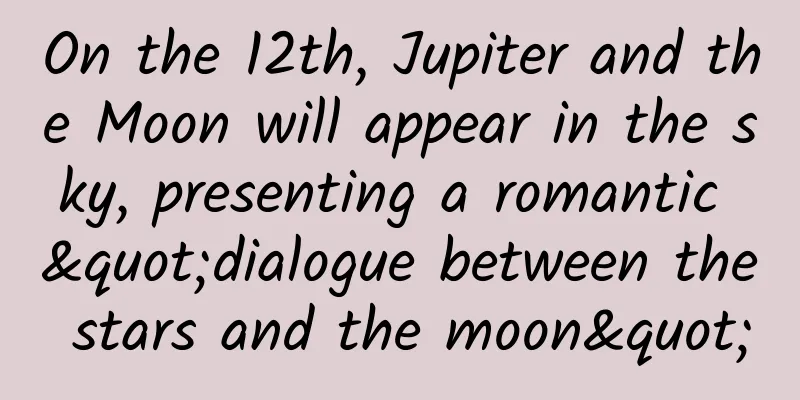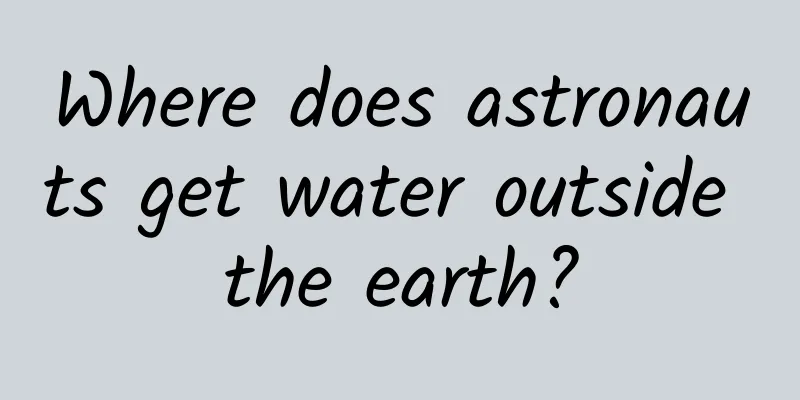On the 12th, Jupiter and the Moon will appear in the sky, presenting a romantic "dialogue between the stars and the moon"

|
According to astronomical science experts, on the morning of the 12th of this month, the wonderful Jupiter-Moon conjunction will appear in the sky, presenting a romantic "dialogue between the stars and the moon". As long as the weather is fine, interested people will be able to enjoy this beautiful scene of "stars and moon cherishing each other" with their naked eyes in the late night of the 11th. This is a photo of Jupiter and the moon taken in Fengtai, Beijing on the evening of September 11, 2022. That night, the sky showed a beautiful astronomical phenomenon of Jupiter and the moon. Photo by Xinhua News Agency reporter Zhang Cheng Normally, Jupiter is the third brightest object in the night sky after the moon and Venus, with a maximum brightness of -2.9. Lai Dihui, a member of the Chinese Astronomical Society and director of the Tianjin Astronomical Society, introduced that throughout July, Jupiter will be moving forward in Aries, rising from the horizon near the northeast around midnight, with a brightness of about -2.3, which is quite eye-catching. It can be seen in the eastern sky near the zenith before sunrise. This is a photo of Jupiter and the moon taken in Shanting District, Zaozhuang City, Shandong Province, on the morning of November 2, 2012. Before dawn that day, the sky showed a beautiful astronomical phenomenon of Jupiter and the moon. Xinhua News Agency At 4:00 on July 12, Jupiter and the Moon will be in conjunction. At this time, Jupiter and the Moon have already risen. If the weather is fine, interested people can see a waning moon in the low sky in the east, which looks like a small boat floating on the top of the clouds. Not far to the lower right of the waning moon, there is a bright star following closely, which is Jupiter. "This is the first time since May 21, 2019 that the distance between the two is close to 1.5 degrees again, which is nearly three full moon diameters (about 0.5 degrees). It is a long-lost opportunity to observe under very good conditions." Lai Dihui said that you don't have to wait until the moment of conjunction to appreciate this scene of Jupiter and the moon. You can start observing from the second half of the night on the 11th. The distance between the stars and the moon does not change much during this period. "Since there are no other particularly bright celestial bodies around, this scene of 'star-moon conjunction' is very clear and worth paying attention to." This is Jupiter and the moon taken in Tianjin in the early morning of October 6, 2012. Xinhua News Agency (Photo by Zhang Chenlin) Jupiter is the largest of the eight planets in the solar system and is known as the "giant planet". It ranks fifth from the sun in order of distance. Currently, the number of satellites of this gaseous planet has increased to 92, making it a veritable "big family" and "king of satellites" in the solar system. Lai Dihui reminded that if conditions permit, the public who are interested can use binoculars or small astronomical telescopes to observe. If they are lucky, they can even observe Jupiter's colorful stripes, the Great Red Spot, and the four Galilean satellites around it. (Reporter Zhou Runjian) Planning: Liu Xinhui Editors: Chong Dahai, Li Minghui Poster production: Feng Juan Produced jointly by Xinhua News Agency Domestic Department and Xinhua News Agency Tianjin Branch Produced by Star Studio |
<<: Listen to the whispers of the distant universe
>>: How did the ancients keep things cool? This air conditioner is more energy-efficient!
Recommend
I have summarized 9 writing styles for 100,000+ soft articles for you!
No matter how the content of a soft article chang...
2021 Clothing Brands Q1-Q3 Social Media Marketing Analysis Report
Under the influence of factors such as consumptio...
"Yangkang" passengers return home
Source: Xinhua News Agency Client Producer: Sun Z...
The "family sedan performance king" Roewe i6 is another hit with its ultra-low fuel consumption certified by the Guinness World Records!
As a masterpiece created by SAIC Motors with inno...
Community operators should know these 5 community management tools!
The community is hot. From enterprises to individ...
This bird is ugly and bald, but more than 10,000 women are protecting it
This bird is "ugly" and bald, but more ...
Why do you start reviewing a fight you didn't win during the day as soon as you take a shower?
Review expert: Yin Tielun, deputy chief physician...
A complete guide to event operations! A must-see for operators!
Event operation is a job that most operations per...
Family dad car, eπ008 and Leapmotor C16, which one is the better replacement for Ideal L8
In the Chinese car market, what car can you buy w...
7-day Victoria's Secret peach buttocks creation plan, say goodbye to flat buttocks and transform into a "perky beauty"
7-day Victoria's Secret Peach Butt Plan, Say ...
Google Chrome VS Microsoft Edge: Which is faster?
The official launch of Windows 10 also brought Mi...
Analysis of offline marketing activity process!
Based on a large-scale electrical appliance marke...
China Automobile Dealers Association: Pickup Truck Market Analysis in June 2022
According to data from the Pickup Truck Market In...
Mystery Method txt e-book, Mystery Method pdf Baidu cloud resources!
Mystery Method txt e-book, Mystery Method pdf Bai...
How did 12 top accounts including Xinbang, Guokr, and Liushenleilei complete their first small goal?
All things are difficult at the beginning, especi...









